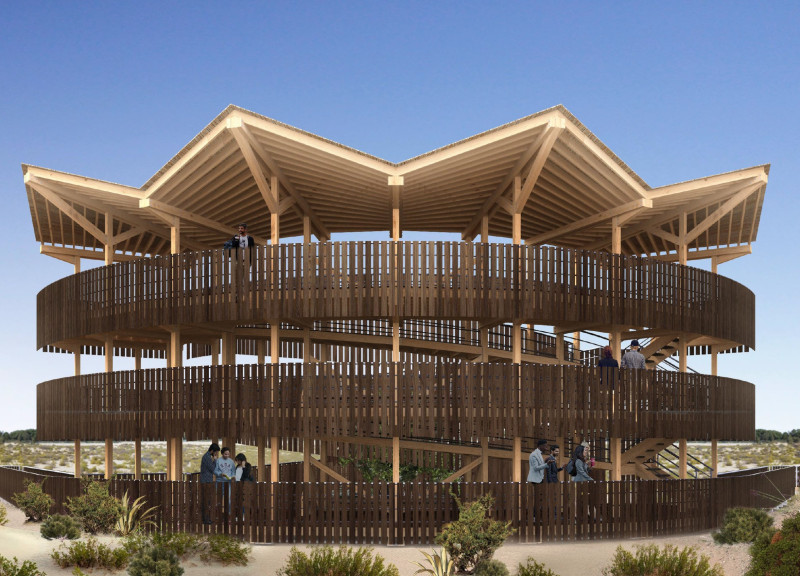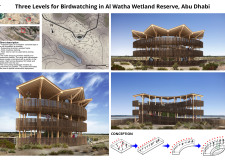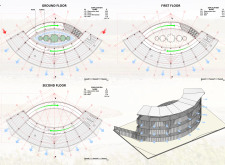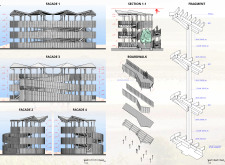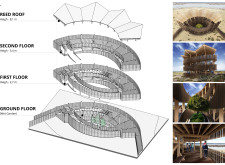5 key facts about this project
The birdwatching structure at Al Watha Wetland Reserve in Abu Dhabi offers a blend of accessibility and engagement with nature. Set in a rich wetland environment, the building serves as a multi-level observation facility. The design focuses on enhancing the experience of birdwatchers and nature lovers while maintaining a connection with the landscape.
Structure and Levels
This design features a radial layout that provides maximum visibility from three distinct levels: the ground floor, first floor, and second floor. Each level offers observation decks that are strategically placed to create optimal views of the wildlife in the wetlands. The layout enhances the experience for visitors, allowing them to interact with both the architecture and the surrounding ecosystem.
Accessibility Considerations
A key aspect of the design is its focus on accessibility, with ramps that connect the various observation levels. This feature ensures that all visitors, regardless of their mobility, can navigate the structure comfortably. The ramps are integrated into the overall design, guiding visitors through the natural landscape and reinforcing the idea of exploration.
Material Choices
Material selection is crucial for the building's functionality and appearance. The foundation system consists of concrete tape and pile foundations, which provide necessary support in the wetlands. A wooden frame serves as the main structural element, supporting the design’s intention to harmonize with its natural setting. Decking is chosen for the flooring, offering durability and comfort, while the roof includes reed or fabric awning covers for necessary shade.
Environmental Integration
The project aims to minimize its ecological impact by preserving the surrounding landscape as much as possible. By avoiding the use of special construction equipment, it prioritizes sustainability throughout its development. This effort highlights a commitment to creating a structure that works in harmony with the natural environment.
The design incorporates high fencing that ensures the safety of visitors while allowing unobstructed views of the wetlands, creating an environment where people can fully appreciate the wildlife. The careful arrangement of spaces invites exploration and enhances the overall experience of being in this natural setting.


